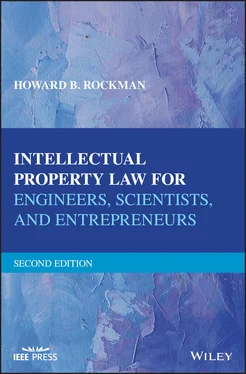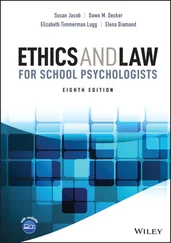In applying the test to determine non‐obviousness, the relevant time period is the time when the patent application, covering the subject invention, was filed. Also, when considering whether your invention can meet the standard of non‐obviousness, please consider a few other points that may help you in making this decision:
1 Does the combination of the devices or processes shown in the prior art lead to a device or process that produces the same or a different result as your invention?
2 Does the device or process derived from combining the prior art function the same as your invention?
3 Is the combined device or process derived from the prior art as efficient as your invention?
4 Is the combined device or process derived from the prior art operative—that is, will it work to produce the intended function and result of your invention?
5 Would the combined device or process from the prior art be more expensive to produce or operate as compared to your invention?
Answers to these questions will help determine whether or not the hurdle of non‐obviousness has been overcome.
The following are a few additional factors taken from cases decided in the field of patent law regarding the question of non‐obviousness over the past several years. For example, if the only difference between your invention and the prior art involves the selection or substitution of a known material due to its known suitability for its intended function or purpose, your invention may not be patentable. See, for example, the Hotchkiss Supreme Court case mentioned previously. Keep in mind, however, the common knowledge that a vast majority of all patentable inventions are combinations of known elements that are formed in a different and novel array to provide a new and unexpected result. Therefore, when determining whether the solution to the problem you have been working on is non‐obvious over the “known elements,” consider whether the result you have obtained is predictable or not from the known elements. As recently described to me by a sage colleague, the standard of meeting the requirement of non‐obviousness is not “Eureka!” It’s more along the lines of “That’s cool.”
If your invention involves the application of optimum ranges within ranges set forth in the prior art, or you merely provide the mechanical or automatic means to replace a manual operation, without any further contribution to the art, you also may not be able to obtain a patent. Additionally, changes in the size, degree, proportion, and sequence of adding ingredients do not lend patentability, unless some new and unexpected result or function can be derived from such changes. For example, making a catalytic converter smaller to fit smaller‐sized cars is not a patentable advance in the art, unless some new structure or function evolves from the change of size.
Conversely, a combination of elements in your invention that produces an improved and unexpected result will lead to patentability, since the invention would be non‐obvious. Also, if your invention omits one or more of the elements that are shown in the prior art devices, but still retains the function of those missing elements in the resulting combination, you may have a patentable invention.
6.5 THE 2007 U.S. SUPREME COURT CASE OF KSR V. TELEFLEX
In 2007, the U.S. Supreme Court had before it a patent case decided previously by the Court of Appeals of the Federal Circuit (CAFC), involving criteria for determining whether a claimed invention was non‐obvious in view of the prior art. The CAFC had applied the single test it had been using in previous non‐obviousness cases:
“Is there some teaching, suggestion, or motivation in the prior art that would have led one of ordinary skill to modify the prior art reference, or to combine a plurality of prior art reference teachings, to arrive at the claimed invention?”
The Supreme Court held that, while this “teaching, suggestion, or motivation” test could be used to determine the obviousness or non‐obviousness of an invention in view of the prior art, this was not the only test to be applied. The Supreme Court then set out six additional rationales that an inventor, a Patent Examiner, or a court or jury, could apply to support a conclusion that a claimed invention is “obvious,” or “lacks an inventive step.” These six additional rationales are listed below, and any one or more could be applied in an obviousness analysis:
1 Combining prior art elements according to known methods to yield predictable results.
2 Simple substitution of one known element for another to obtain predictable results.
3 Use of known techniques to improve similar devices, methods, or products in the same way.
4 Applying a known technique to a known device, method, or product ready for improvement to yield predictable results.
5 “Obvious to try”—Selecting from a finite number of previously identified, predictable solutions, with a reasonable expectation of success.
6 Known work in one field of endeavors may prompt variations of the known work for use in either the same field or a different field, based on design incentives or other market forces, if the variations would have been predictable to one of ordinary skill in the art.
6.6 ILLUSTRATIVE NON‐OBVIOUSNESS ANALYSIS
It is apparent from the preceding comments that a determination of whether your novel and useful invention would ultimately be declared as non‐obvious over the prior art, and therefore worthy of a patent, is one that is not easily arrived at. Therefore, one of the services that you should solicit when engaging a patent attorney is that the patent attorney carefully look at all of the related prior art and provide you with an opinion about whether your invention is both novel and unobvious. You should ensure that any report on patentability that your attorney submits to you includes an analysis of the question of non‐obviousness as well as novelty. It would not be wise to spend the time and money to prepare a patent application where there is a high risk that the USPTO will reject the application on grounds of obviousness. Do not try this at home—leave it to the professionals!
Having said all of this regarding the fitful test of non‐obviousness, I feel it prudent to provide you at this point with a hypothetical example illustrating how a determination of non‐obviousness works through one’s thought processes. Assume that someone invents a general‐purpose, programmable, digital computer, and that this computer is colored green. The inventor files a patent application claiming a green digital computer. Assume also that the physical structure of the computer is old in the art, but never had a computer been colored green before, and that there is not a single prior art reference or patent showing a green computer. Consider also that dozens of other colors and shades in the visible spectrum were used as colors for the same kind of computer.
The first question is whether the claimed green computer is novel over the prior art. This determination must be made first, because the question of unobviousness becomes moot if there is no novelty. In this particular situation, the green computer is novel, since it is not identically described in any single item of prior art. For purposes of our analysis, a green computer must be considered structurally different from a computer of any other color. Therefore, it is now appropriate to examine the “green” technology embodied in this computer to determine whether it is an unobvious advance over the prior art.
At first glance, you may determine that using the color green surely would be obvious as compared to computers using all the other colors of the visible spectrum. However, further analysis in my hypothetical may show that this answer is not correct. For example, given the same set of facts assume that, when the computer is green, the frequency band of the green color serves to absorb and concentrate ambient cosmic and ultraviolet rays that, in combination, change the static electrical charge in all of the components of the computer, including the conductive and semi‐conductive elements in the computer. As a consequence, all the electrical and electronic operations are speeded up by a factor of 1.2, wherein the computer literally operates 1.2 times as fast, and also is possibly 1.2 times more valuable than a computer that is not colored green. Given all of these new and unexpected results of using a green computer, the subject invention also passes the test of non‐obviousness, since no one else has ever used the color green to obtain these results in a computer.
Читать дальше












